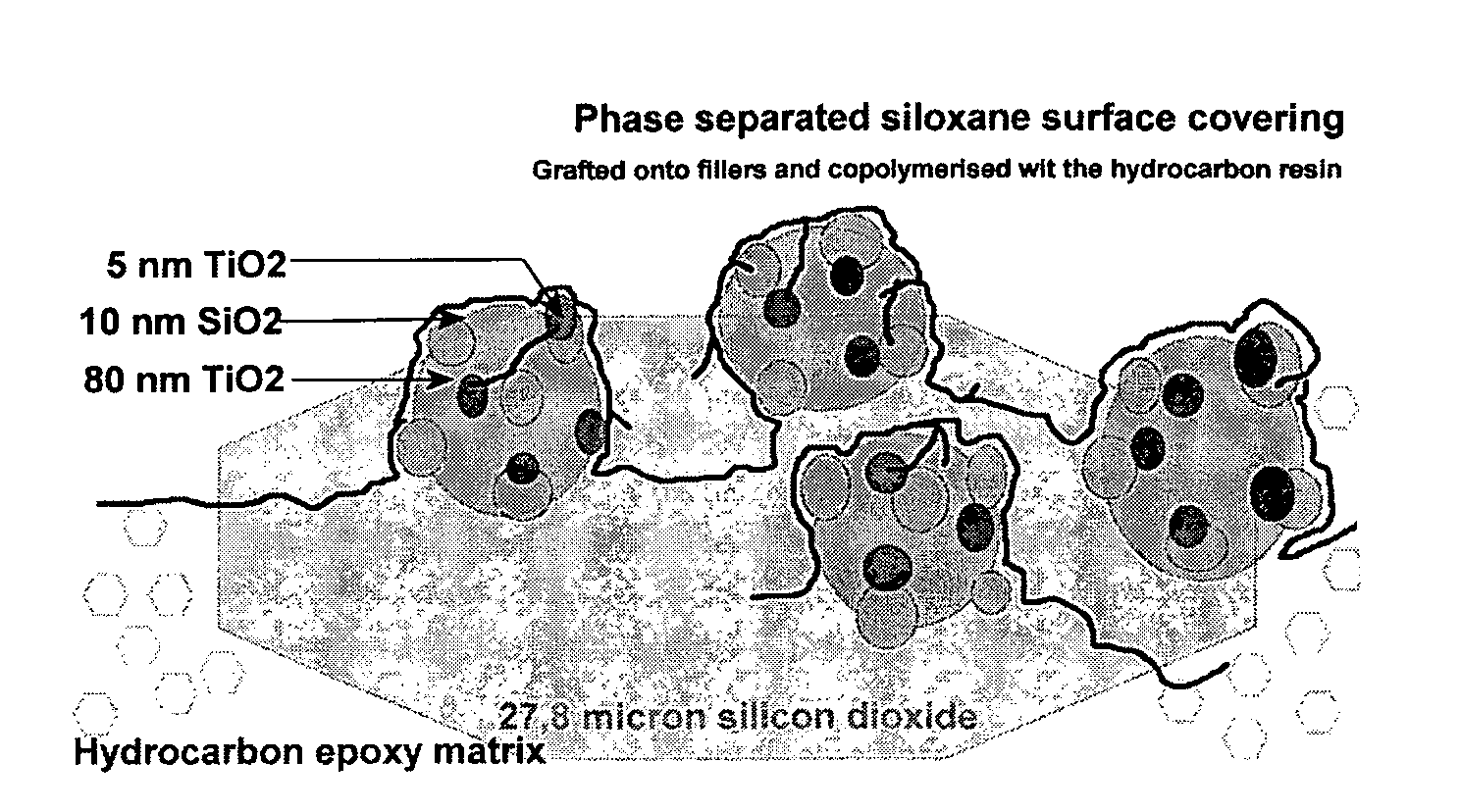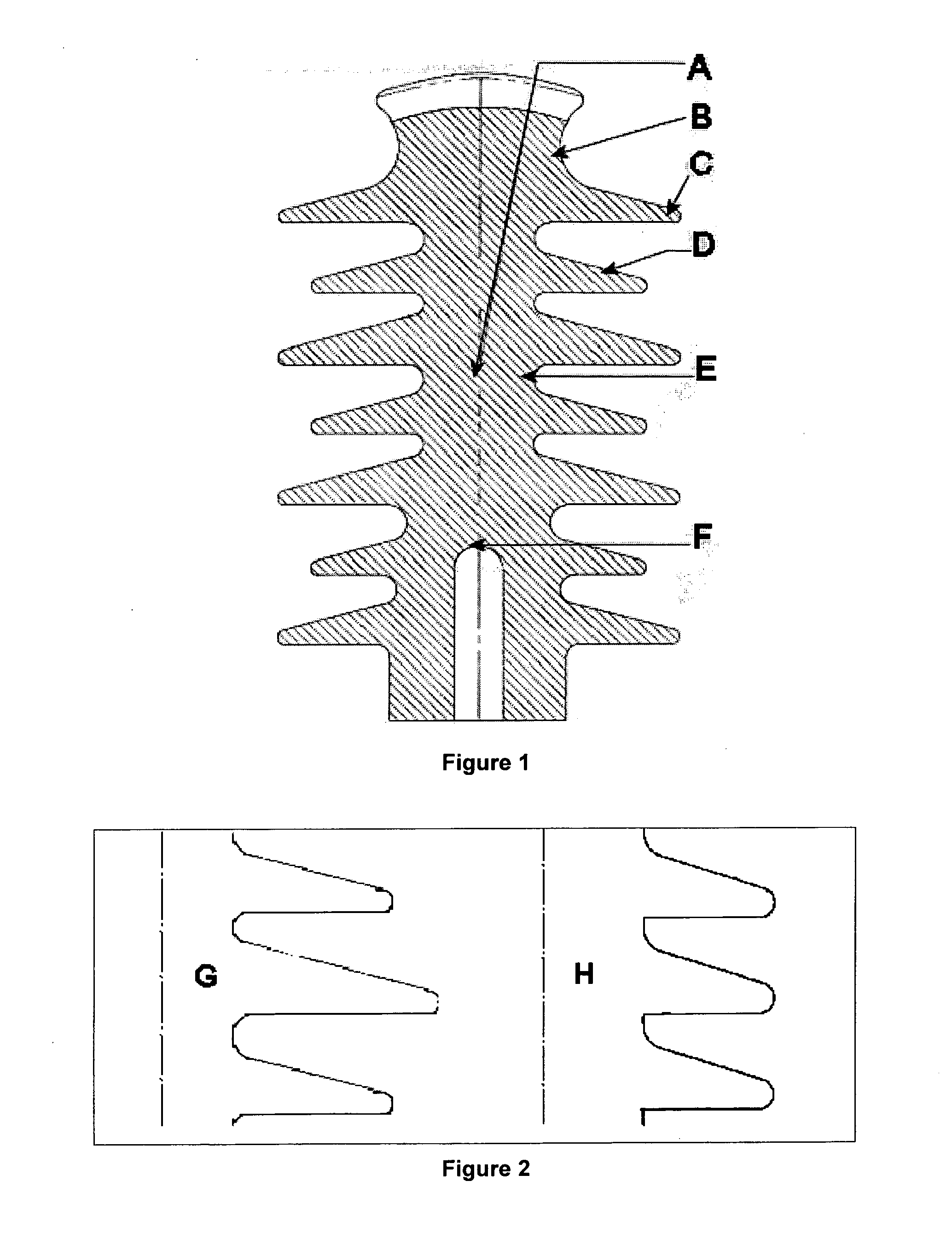Polymeric High Voltage Insulator with a Hard, Hydrophobic Surface
a high-voltage insulator and hydrophobic technology, applied in the direction of organic insulators, plastic/resin/waxes insulators, inhomogenous insulation materials, etc., can solve the problems of reduced service life, inability to meet the needs of electrical appliances, and reduced service life, so as to reduce the weight of each flexural strength class, the effect of low cost and less expensiv
- Summary
- Abstract
- Description
- Claims
- Application Information
AI Technical Summary
Benefits of technology
Problems solved by technology
Method used
Image
Examples
embodiment
Preferred Embodiment
Example 1 of the Polymer Concrete Core
[0115]The formulation set out below gives the weight of each component for 4.436 kg of the final polymer concrete formulation.
[0116]The particulate dry fillers are first weighed and thoroughly mixed in a catering industry blade mixer. The fillers were 200 g SiO2 with a mean particle size of 27.8 micron, S15 supplied by Idwala Minerals, 1000 g SiO2, with a mean particle size of 275 μm, AFS55 supplied by Consul Minerals, and 2000 g fly ash, DuraPozz supplied by Ash Resources with a mean particle size of 15 μm. The fillers were wetted with 400 g styrene, NCS monomer and mixed well.
[0117]The polymer concrete formulation is prepared from 18 weight percent (0.800 kg) isopthalic unsaturated polyester resin (density=1.11 to 1.12) and MW 3000 to 3500, NCS992 supplied by NCS resins. Approximately 0.004 kg (0.5% of the resin weight) accelerator, cobalt napthenate in a diluent, AC1 supplied by NCS Resins was added to the resin and stirre...
example 1
of a Moulded Insulator Object
[0133]A 33 kV 10 kN class insulator with an F-neck for outdoor use on an AC distribution network with a creepage distance of 1051.97 mm and creepage length of 31 mm / kV was manufactured in accordance with the method of the invention. The total weight is 4.4 kg versus 7.1 kg for a porcelain insulator with a similar rating.
PUM
| Property | Measurement | Unit |
|---|---|---|
| Length | aaaaa | aaaaa |
| Length | aaaaa | aaaaa |
| Length | aaaaa | aaaaa |
Abstract
Description
Claims
Application Information
 Login to View More
Login to View More - R&D
- Intellectual Property
- Life Sciences
- Materials
- Tech Scout
- Unparalleled Data Quality
- Higher Quality Content
- 60% Fewer Hallucinations
Browse by: Latest US Patents, China's latest patents, Technical Efficacy Thesaurus, Application Domain, Technology Topic, Popular Technical Reports.
© 2025 PatSnap. All rights reserved.Legal|Privacy policy|Modern Slavery Act Transparency Statement|Sitemap|About US| Contact US: help@patsnap.com



